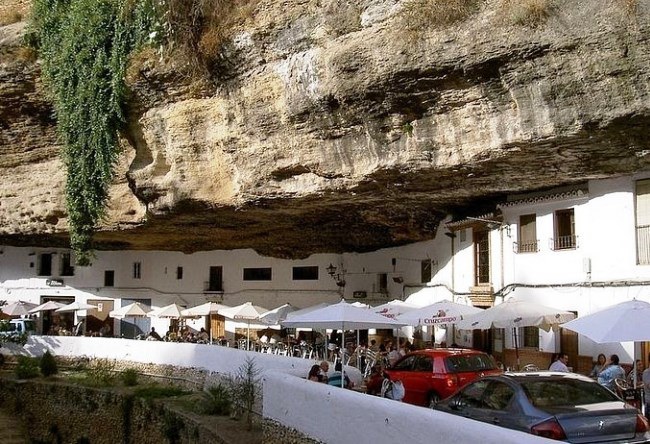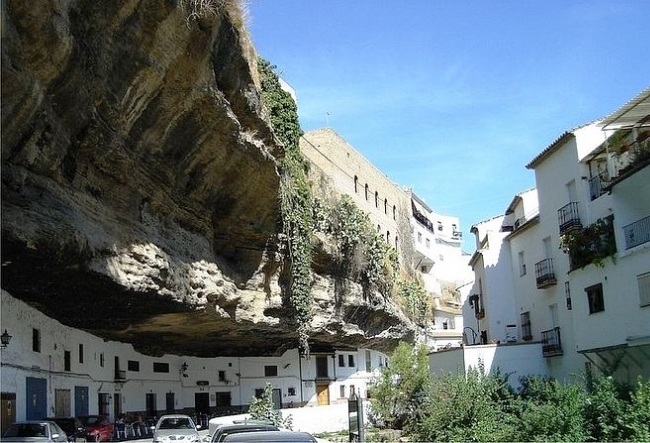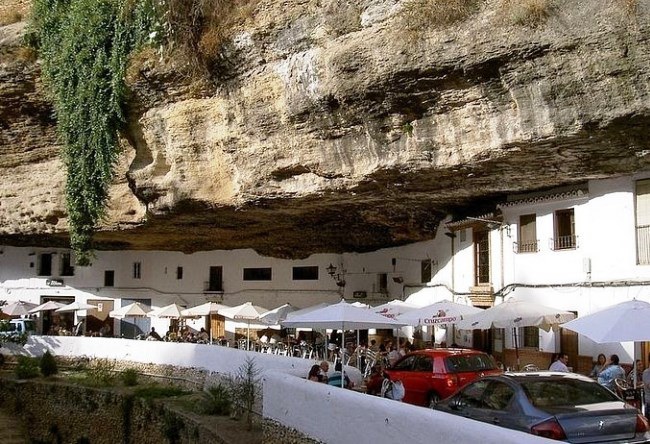 17, Январь, 2016
17, Январь, 2016City Setenil de las Bodegas
There are not a lot of amazing cities, but so that the rock … In one of the Spanish province of Cadiz is a small City Setenil de las Bodegas. It is literally surrounded by cliffs and is embedded in them. It seems that the rock is not a stone at all, and so … frozen foam, decided to absorb the city, but could not.

At one time there flourished winery Setenil de las Bodegas. The phrase translated means Setenil – is one of the cellars where the wine is stored. The town has a reputation throughout Andalusia their houses, painted in white paint, and the fact that it is made directly in the rocks. The boundaries of the city prostrated along the river Rio Trejo and some of its buildings are in rock crevices, artificially extended with the addition of the walls from the outside.

Later, Setenil de las Bodegas emerged from reinforcing tary settlement of Mauritania, who presided over the road to the Rio Trejo and to the north-west side of the city of Ronda. The city still can be seen the castle, which dates from at least the twelfth century. At that time, ruled the Almohades and it is believed that it was then, and there was a city.

However, the work of archaeologists digging in the caves complexes, such as the Cueva de la Pileta, to the west side of Ronda show that the population there were twenty-five thousand years ago. This is proven by the remains of housing at the time. This landscape was of great importance in the defense system of the Arab period. More than once his troops stormed a Christian, and only in 1488 the Catholic Kings were able to take it under their complete and undivided control.

Name of Setenil de las Bodegas dated fifteenth century, when settlers to the flowering of the Christian faith are groves of olives and almonds, began cultivating vineyards. The first two cultures here in modern times and continue to thrive and vineyards, unfortunately, destroyed insects in the 1860s.











